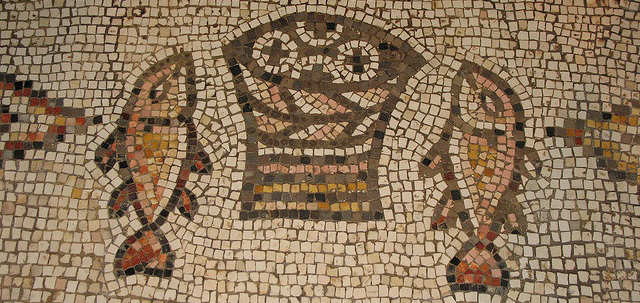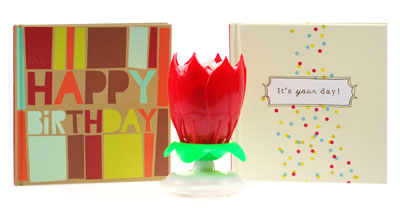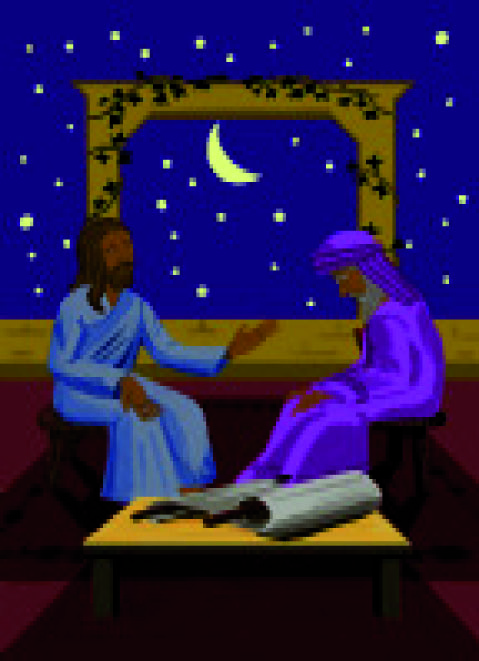Note: We now have about 70 posts featuring object lessons. Adding them to this page has become unwieldy.
We suggest you type “object lesson” in the site’s search box to help you find a lesson of interest to you.
You can add the text of the week or a topical key word to fine tune your search. Examples of key words: Good Samaritan, Widow of Nain, Hope, Advent, or Psalm 25.
You can also look for the category Object Lessons for Adults to bring up every object lesson.
Our anthologized object lessons will be available in ebook form this fall.
2×2 believes Object Lessons are a great opportunity to teach adults and to build community among worshipers of all ages.
We take a different approach. Object lessons are typically directed at children who are often too young to think abstractly, but adults, who are capable of abstract thought, are watching.
2×2 directs the lesson to adult learners but welcomes children to observe and participate at their level of understanding. Since we know children are often watching, we suggest hands-on activities or music which can involve the whole assembly of learners, thereby building community within the congregation.
A well-done object lesson can fill the void left by the waning popularity of Sunday School and adult education and can be a welcome addition to a worship service.
_____________________________________________
 Trust (August 5, 2012)
Trust (August 5, 2012)
Exodus 16:2-4, 9-15 • Psalm 78:23-29 • Ephesians 4:1-16 • John 6:24-35
Your object is an umbrella. As you begin to preach your object lesson. Open the umbrella. You might sit down and pause for a moment with the open umbrella. You might walk around the sanctuary a bit with the umbrella.
If you live in an area experiencing drought, engage members of the congregation in talk about the weather and how it is affecting them. Are they complaining? Are they praying for rain?
Point out that if they are praying for rain and they trust God, they ought to be carrying an umbrella wherever they go.
The umbrella, in this case, is the symbol of trust.
God WILL provide. It is our job to trust and accept His help!
Point to the Old Testament lesson for the day — the story of how God provided his discontented people with manna in the morning and quail in the evening.
There is more to this story, some of it told in Numbers, chapter 11. The full narrative includes the account of God’s anger and Moses’ angry exasperation with the people he is trying to lead. Getting people to trust God isn’t easy!
But the lesson today is about God providing faithfully for his people, even when they don’t seem to deserve it.
That may be enough for today’s object lesson.
There is more to the lessons for the day. Jesus relies on common knowledge of this story, refreshed by his recent miraculous feeding of the multitude with bread and fish, and extending the metaphor to his own purpose on earth. He is the Bread of Life.
He is playing with them a bit in his teaching style just as you are playing with the congregation in walking about with an umbrella in church.
People are no different today than in Moses’s or Jesus’ time. We want assurance that our physical needs will be met. You’ll pray for many of them later in the service.
Do we truly trust that God will answer our prayers?
Silently put your umbrella away.
photo credit: solidether via photo pin cc
 Measuring Miracles (July 29, 2012)
Measuring Miracles (July 29, 2012)
2 Kings 4:42-44, Psalm 145:10-18, Ephesians 3:14-21, John 6:1-21
The Gospel story of Jesus Feeding the Multitude is a lot about numbers.
Use your fingers as your objects and start counting. Or for a modern flair, use a calculator.
- The boy had five barley loaves and two fish.
- There were 5000 in the crowd.
- When all had eaten their fill, the disciples gathered 12 baskets of leftovers.
Numerologists will read special meaning into these passages.
- Five barley loaves (five=grace)
- Two fish (two=witness)
- for a total of seven (seven=perfection)
- Twelve is the number of governance. (12 tribes, 12 disciples)
The story—at least for us today—is less about numbers and more about miracles.
The audience that day would have known the Old Testament story that is paired with this gospel. Elisha gives the orders in this story. People are fed. Food is leftover. It was no less newsworthy because this miracle fed only 100.
The New Testament narrative is meant to leave no doubt. Jesus can perform miracles—miracles that surpass Elisha’s and also surpass our expectations and satisfy our desires. Elaborate on this.
If you are celebrating Communion, do a quick calculation of how many might come to the altar a bit later in the service. Estimate the number that might be coming to other altars in other churches in your neighborhood and beyond at the same time. Add this number to the Bible’s 5000 and sense an ongong miracle.
photo credit: hoyasmeg via photo pin cc
 The Power of Touch (July 22, 2012)
The Power of Touch (July 22, 2012)
Mark 6:30-34, 53-55
Touch is important in our lives right from the start.
New parents react instinctively when their child breathes its first breath. They swoop their newborn into a loving embrace.
Touch continues to be among the most powerful senses.
Here is a video of how the sense of touch is immediately embraced by very young children. It shows a baby, barely old enough to walk, looking at a magazine. This child approaches the magazine as if it were an iPad, touching the images waiting in vain for a response.
The common form of greeting and agreement, the handshake, grows from our need to touch. In ancient days the outreached hand was a way of saying, “Look, I am not armed. I am your friend.”
The power of touch is central to this story in Mark.
The apostles (sounds like there was a good number of them) have returned from their 2×2 mission trips. It’s time for debriefing! They attempt to hold a retreat.
A couple of weeks ago, the Gospel was about one woman who stole Jesus’ healing power by touching his garment with faith. Jesus responded.
Now the word is out. People far and wide have heard about Jesus.
Everyone is clamoring to touch Jesus. They are carrying their ailing loved ones across the rocky, hilly countryside to get near enough to Jesus to touch him.
Touch is important in our world. Sometimes, when words fail, a hand on the shoulder or a sudden embrace comes to our rescue.
We find comfort in a kind touch. We are repulsed when the sense of touch is abused.
We long to be touched, to be connected to one another, to be connected to God. Think about that today as we pass the peace. When we touch someone, it should mean something.
photo credit: Malingering (retouched) via photo pin cc
 God Takes Our Measure (July 15, 2012)
God Takes Our Measure (July 15, 2012)
Amos 7:7-15, Psalm 85 verses 8-13 and Mark 6:14-29
Today’s theme is all about judgment.
In the Amos story, the Lord appears to the reluctant prophet Amos with a plumb line. This would have been a common household tool at a time when people built their own houses and fences. In this passage, the plumb line is symbolic of judgment. The Lord intends to make sure his people measure up. Amos is sent off on a plumb line mission. (Talk about object lessons for adults!)
The Gospel story for today is the execution of John the Baptist, performed against the better judgment of Herod. His dilemma: do the right thing and break a bad promise or live up to conniving expectations and deflect potential criticism for not keeping his word.
For an object lesson today, use a modern tool that symbolizes people’s fear of being judged. Carry a clip board with a piece of paper and a pencil. Walk up to a willing member or two and engage them in idle chatter. (Warn them beforehand.) Ask about their work? How’s the family? While you talk, pretend to take notes or be checking boxes.
After two or three casual interviews. Return to your preaching location and engage members in a conversation about how they felt having a conversation with someone who was taking notes and in effect grading them.
Tie their answers to the Old Testament story of Amos and the role he has been assigned—to go among God’s people and prophesy in order to keep them on the straight and narrow.
Follow up the story with today’s Psalm (85:8-13). It, too, is about judgment, but it stresses restoring our relationship with God. Bring them back to the plumb line. The walls will be rebuilt. This time they will be built on a foundation of forgiveness.
photo credit: seminarianvoitus (retouched) via photo pin cc
Go 2×2 and Travel Light!
Mark 6:1-13 reveals the part of mission work with which we are all fear: REJECTION.
The passage begins with Jesus receiving criticism from those who knew him best, his neighbors. Jesus was not unaffected. He had a hard time doing more than a few healing miracles among his own people. It ends with Jesus sending the disciples out into the same hostile world. They are to go 2×2. They are to carry nothing but a walking stick.
The plan is not very inviting. Few today would accept such a call. It would be considered economically unfeasible.
Use a small suitcase or sports bag. Pack it with a few travel essentials: razor/toiletries, extra set of clothes, bottle of water, a couple of power bars, a wallet with money.
Talk about going on a mission trip. Read Jesus instructions from verses 8 and 9.
Slowly unpack the suitcase or duffel as you read the list of forbidden items from scripture. Soon your bag will be empty.
Talk about Jesus sending the disciples out to do his work with nothing but a staff to lean on. Ask church members why He might have taken this approach. What would be the benefits or impediments? Give them time to think about this.
Finish the sermon by latching or zipping up the empty bag and taking a quick walk around the sanctuary greeting a few people with a paraphrase of the scripture verse from the accompanying Epistle lesson: 2 Corinthians 12:2-10.
- God’s grace is sufficient.
- In our weakness we are made strong.
- Be content with hardship for Christ’s sake.
photo credit: dbtelford via photo pin cc
The Wind Blows Where It Will (June 3, 2012)
“The wind blows where it chooses, and you hear the sound of it, but you do not know where it comes from or where it goes. So it is with everyone who is born of the Spirit.”
Object: With children, precut a paper pinwheel and pin it to a straw. With adults, plug in an electric fan.
Talking points: Wind is a wonder. On a hot summer day, we turn our faces toward the wind for relief. Come winter, we shield our faces behind our mufflers. We know there is power in the wind and we try to harness it. We try to create comfort in our environment by adding air conditioning or directing fans. We build windmills on top of our hills to channel its power. Now and then, when storms blast and break the limbs of our trees or tear off the roofs of our firmly constructed homes, we are reminded that the wind is more powerful than we are.
Wind is a challenge to us. There is little we can do to control it — but still we try! “So it is with everyone born of the Spirit.”
Nicodemus joined Jesus in the night on the roof garden, just trying to make sense of things. He was an old man, a respected authority on scripture. New ideas were turning his world upside down like a tornado. The rooftop garden was a good meeting place, away from public scrutiny. But in the hot Palestine night, it was probably a place where Jesus hoped Nicodemus would feel the gentle—or not-so-gentle—breeze of the Holy Spirit.
A New Commandment (May 13, 2012)
Sunday’s texts are all about love. The gospel is John 15:9-17 and is the focus of much of John’s life teachings—The New Commandment.
This is my commandment, that you love one another as I have loved you. (v.15)
It is Jesus’ last but abiding message to the world before returning to heaven.
Such a simple commandment, but so easy for us to forget as we tend to live our lives in a world measured by justice, not love.
Try acting out this scenario.
Tell a few members in advance that they will be taking part in a play. But don’t tell them too much. Make sure they are members with a sense of humor and make them realize that they will be role-playing.
Create a mock court. You might want to put on a black robe or hold a gavel in you hand to indicate that you are changing roles. Use the pulpit as a judge’s bench or stand on the chancel steps, indicating that you are “in charge.”
Have someone declare “Order in the court” and “All rise” as you make your entrance in your new persona.
Introduce yourself as “judge” or add to the unreality with a more gloried made-up title.
Call your pre-selected members forward one by one. Charge them with an infraction. Make something up: nodding off during the sermon, singing off key, arriving late or skipping out before the offering. Nothing serious. Keep it light.
As each one is charged ask him or her to stand aside to await sentencing.
After all your “perpetrators” are properly charged, pose a question to the congregation. Ask them for sentencing ideas. You can do this for each one or generally, depending on how much time you want to devote.
In the end, call all the offenders back and give each one the same sentence: To love one another. You can do this one by one with an elaborate build up ending with “Love one another.” Use your imagination.
Hit the pulpit with your gavel. Send everyone back to his or her seat.
End the mock court signaling your court crier to call “All rise” and declaring the session to be over.
Get rid of the gavel and black robe, return to your role as preacher and elaborate a bit on the message of the day.
Pentecost: Birthday Greetings
Send your church a Pentecost Birthday Card. They’re hard to find so we made one for you.
Download the high res image for printing here.
If you have an imaging editing program, type the name of your church under the word “BIRTHDAY.” We left room.
Notice the fiery background and the descending dove. You can talk about Pentecost imagery in your lesson.
Take the image on a CD or flash drive to your local quick printer and have one printed and scored for you. It shouldn’t cost more than a couple of bucks. Ask for a trim size of 7″ x 5″/ tent fold. Don’t forget, you’ll need an envelope, which your printer can provide.
Write a note in the card. It can be from you, scripture or a “note from God” about the importance of Pentecost.
Mail it to your church, but don’t open it until worship. When you or a congregation member opens it, read the message to your congregation. Pass it around and talk about the image of fire and the descending dove.
Here’s a second part of the object lesson. While the card is being passed around, wheel out a birthday cake (optional) and a special candle which you can order online.
 Light this flowery candle and it unfolds in a fiery display of two-tiers of small candles which spin as Happy Birthday plays. It will leave a lasting impression. Stand back. It makes quite a show!
Light this flowery candle and it unfolds in a fiery display of two-tiers of small candles which spin as Happy Birthday plays. It will leave a lasting impression. Stand back. It makes quite a show!
You can put the candle on top of a cake if you wish to celebrate after worship.
If you happen to belong to SendOutCards online card service you can upload this art and send a card using this customized card service. They even offer the candle which would arrive with your card in a nice gift package. For members the total cost is under $20 and as low as about $15. For added effect, this card service allows you to create over-sized cards (roughly 11 x 8.5). The big size would be very effective in the congregational setting.
We recommend churches become acquainted with this card service as it is a great evangelism tool. We’ll talk about this cards as an evangelism tool in a later post. If you look up the site and want to join, you can reference our membership number (85519).
For example: If Pentecost is confirmation day in your church, you could take a photo of each confirmand and send the same card with the confirmands picture inside and a note from the pastor or congregation. A personalized card commemorating this faith milestone is sure to be a cherished keepsake.
PS: A video of this object lesson would be great video to add to your congregtion’s web site or blog or Facebook timeline.



